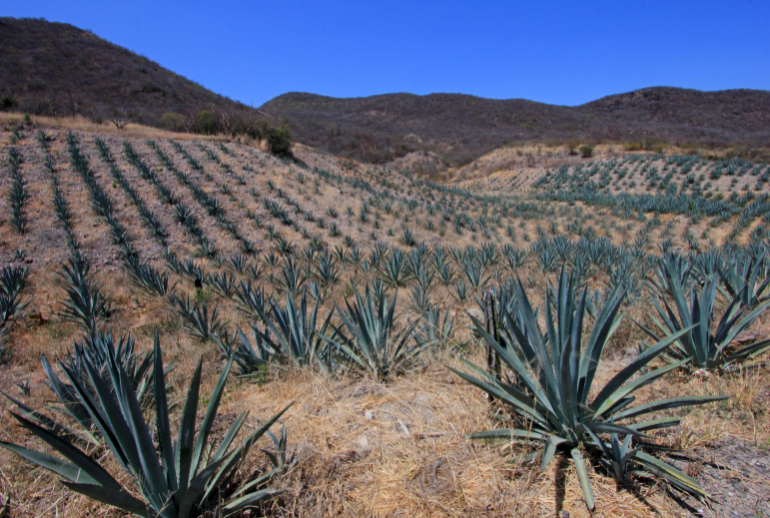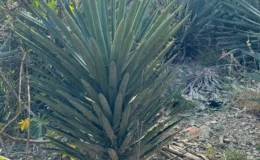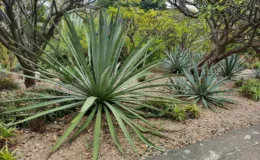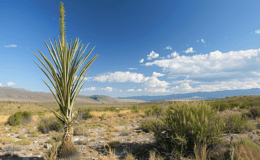Chapter 1: The Pre-Hispanic Era
The story of mezcal begins in the pre-Hispanic era, around 400 BC, when the indigenous people of Mexico discovered the intoxicating effects of the fermented sap of the maguey plant, also known as agave. The name “mezcal” itself comes from the Nahuatl words “metl” and “ixcalli,” which mean “oven-cooked agave.” This name is a testament to the traditional process of making mezcal, which involves cooking the heart of the agave plant in an earthen pit.
Anthropologists from the National Autonomous University of Mexico (UNAM) found evidence in Oaxaca that the ancient people distilled mezcal in clay pots. The agave plant was considered sacred and was primarily reserved for holy men. Legend has it that lightning struck an agave plant, cooking and fermenting the juice, which led to the discovery of mezcal. This divine origin story has been passed down through generations and is still told today.
Chapter 2: The Spanish Conquest and the Introduction of Distillation
The process of distillation was introduced to Mexico by the Spanish in the 16th century. The Spaniards had run out of their own brandy and started to distill agave to produce a spirit. Some theories suggest that the first distillation of mezcal was carried out by the first Filipino sailors who arrived in Mexico with the Manila galleon in 1570. They brought with them distillation techniques and stills from their native country.
The Filipinos established coconut plantations on the west coast of Mexico. They made a coconut nectar called lambanog that was obtained from the fermentation of the coconut mixture. The theory points out that the first distillations of mezcal took place in the Colima area, where the Filipino coconut plantations were located. However, these are just theories, and the true origins of mezcal distillation remain shrouded in mystery.
This new spirit quickly became popular, and its production spread throughout the Spanish colonies. However, the Spanish authorities soon became concerned about the competition it posed to Spanish wines and brandies, and in the late 16th century, they issued a series of edicts restricting the production of agave spirits. Despite these restrictions, the production of mezcal continued, often in secret.
Chapter 3: The 17th Century: The Underground Era of Mezcal
The 17th century was a challenging time for mezcal. The Spanish authorities’ attempts to suppress the production of agave spirits led to the development of an underground mezcal industry. Mezcal producers had to hide their operations, often producing the spirit under the cover of night.
Despite the risks, the demand for mezcal remained high. The spirit was deeply ingrained in the local culture, and it was used in religious ceremonies and as a medicinal remedy. The underground era of mezcal production also led to the development of new techniques and flavors, as producers experimented with different types of agave and distillation methods.
By the end of the 17th century, the Spanish authorities had relaxed their restrictions on mezcal production, recognizing the futility of their attempts to suppress the spirit. This marked the beginning of a new era for mezcal, as producers were able to come out of the shadows and begin to develop the industry that we know today.
Chapter 4: The 18th to 19th Century: The Rise of Artisanal Mezcal
During the 18th and 19th centuries, mezcal production was mostly artisanal, and the spirit was consumed locally. It was during this time that mezcal started to gain a reputation outside of its local regions, although it was often overshadowed by its more famous cousin, tequila.
Despite this, mezcal remained a beloved spirit in many communities, especially in the state of Oaxaca. It was often used in religious ceremonies and celebrations, and it was believed to have medicinal properties. Some communities even believed that mezcal could cure scares and used it in rituals that lasted three days, in which the person was “bathed” in a temazcal or ancestral sauna made of stone, where mezcal was combined with 16 herbs to detoxify the body and recover “the loss of the soul.”
Chapter 5: The 20th Century to Present: The International Recognition of Mezcal
In the 20th century, mezcal began to be recognized on an international level. In 1994, mezcal received a Denomination of Origin (DO), which protects the production of this drink in several states of Mexico, including Oaxaca, Durango, Guanajuato, Guerrero, Michoacán, San Luis Potosí, Puebla, Tamaulipas, Zacatecas, Aguascalientes, Morelos, and Estado de México.
Today, mezcal is celebrated for its artisanal production methods and its variety of flavors and aromas. The spirit is often distilled in small batches, and various species of agave may be used to create a variety of flavors. The smoky, earthy flavor of mezcal, which is a result of the agave hearts being cooked in underground pits, distinguishes it from other spirits.
Chapter 6: The Famous Brands and Their Stories
Del Maguey
Del Maguey is one of the most recognized mezcal brands in the world. Founded by artist Ron Cooper in 1995, Del Maguey played a crucial role in introducing the spirit to the U.S. market. The brand is known for its “Single Village” mezcals, each of which is produced in a different village in Oaxaca and has its own unique flavor profile.
Cooper’s journey into the world of mezcal began when he visited Mexico in the 1970s. He fell in love with the country and its culture, and he was particularly drawn to the traditional methods of making mezcal. He spent years learning about the spirit and building relationships with mezcal producers in Oaxaca. His passion for mezcal led him to create Del Maguey, which has since become a symbol of the spirit’s artisanal heritage.
Ilegal Mezcal
Ilegal Mezcal has a fascinating history that begins in Guatemala. John Rexer, the founder, began smuggling mezcal from Mexico to his bar, Café No Sé, in Antigua, Guatemala in the early 2000s. The brand was officially launched in 2006 and has since become a significant player in the mezcal industry.
Rexer’s smuggling adventures have become the stuff of legend in the mezcal world. He would often travel by night, using back roads to avoid police checkpoints. His determination to bring mezcal to his bar led to the creation of Ilegal Mezcal, a brand that embodies the rebellious spirit of its founder.
Real Minero
Real Minero is a family-run operation that has been making mezcal for several generations. The brand is renowned for its artisanal mezcal, which is made using traditional methods. Real Minero is particularly known for its use of rare agave varieties.
The family behind Real Minero has a deep respect for the land and the agave plant. They believe that the quality of their mezcal is a reflection of the care and attention they put into every step of the production process, from the cultivation of the agave to the distillation of the spirit.
Dos Hombres
Dos Hombres is a relatively new player in the mezcal market. The brand was launched in 2019 by “Breaking Bad” actors Bryan Cranston and Aaron Paul. Despite its celebrity backing, Dos Hombres is committed to producing artisanal mezcal and works closely with a family-owned distillery in San Luis del Rio, Oaxaca.
The story of Dos Hombres began when Cranston and Paul were looking for a new project to work on together after the end of “Breaking Bad.” They decided to create a mezcal brand that would reflect their shared passion for the spirit. Their journey took them to Oaxaca, where they met a family of mezcaleros who shared their vision for a mezcal that was smooth, rich, and approachable.
Chapter 7: The Future of Mezcal
The future of mezcal looks bright. As more people discover the spirit, the demand for mezcal continues to grow. However, this growth also presents challenges. The traditional methods of making mezcal are time-consuming and labor-intensive, and the agave plant takes many years to mature. As a result, there is a risk of overharvesting and a loss of biodiversity.
Despite these challenges, the mezcal industry is committed to preserving the spirit’s artisanal heritage and protecting the environment. Many brands are implementing sustainable practices, such
as reforestation programs and the use of organic farming methods. These efforts ensure that the tradition of mezcal will continue for generations to come.
Conclusion
The history of mezcal is a rich tapestry that intertwines with the history of Mexico itself. From its origins in pre-Hispanic times to its current status as a globally recognized spirit, mezcal has remained true to its roots. Its artisanal production methods, which have been passed down through generations, are a testament to the respect and reverence that the Mexican people have for the maguey plant and the delicious spirit it produces. Whether you’re sipping on a smoky joven or a complex añejo, when you drink mezcal, you’re participating in a centuries-old tradition that celebrates the rich culture and history of Mexico.





